I cannot say how many times I get asked this question when tourists come to town. I wonder what it is about a thriving independent bookstore in a fairly busy little town that makes people think we don’t actually take credit cards.
It’s all I can do sometimes to not say, “No, we don’t take credit cards, in fact, we only accept pieces of eight.” Really, practically every store on the planet takes credit cards. Someone once expressed surprise that I had a computer at the register. Just because our store is in a semi-rural area people make assumptions, and sometimes that makes me cranky.
It’s that same mentality, which is vaguely antagonistic, that has people coming up to the register saying, “How much more will this cost me than at a big store?” There can be a boutique mentality for some people shopping at a smaller bookstore, where they automatically assume they’ll be paying more because the store is smaller and doesn’t have buyer power.
But it’s really hard to charge more for a book: the price is printed right there on the book in at least two places. Small stores can still have very competitive pricing due to discounting – for example, we discount bestsellers, and sales and customer loyalty programs are often free at indie bookstores, so in the end, you wind up saving more than at the bigger stores.
I take a deep breath and happily smile back at customers who ask these questions and say, “I take all credit cards, save Diners Club.” Then I take my moment on the indie pulpit and extol the beauty and importance of an independent bookstores and why we’re important.
And then I handsell them a book or two they didn’t even know they wanted, and then I ask if them if they’ll be paying with Visa, Mastercard, Discover or American Express.
The Author-Indie Bookstore Connection: Eric Luper Talks Promotion
Elizabeth Bluemle - May 12, 2011
 There are some writers — Kate Messner, Chris Barton, Cynthia Lord, and Katie Davis spring to mind — who seem exceptionally capable when it comes to book promotion. They offer something more to indie booksellers and readers than the simple bookmarks or postcards that many of us rely on, and those extras help make events and book sales pop.
There are some writers — Kate Messner, Chris Barton, Cynthia Lord, and Katie Davis spring to mind — who seem exceptionally capable when it comes to book promotion. They offer something more to indie booksellers and readers than the simple bookmarks or postcards that many of us rely on, and those extras help make events and book sales pop.
YA and MG author Eric Luper (Jeremy Bender and the Cupcake Cadets, HarperCollins/Balzer + Bray, May 2011) is such an author, with a knack for coming up with creative ways to get out the word about his books. To me, he seems poised to hit the mainstream, and I think his efforts have a lot to offer both booksellers and up-and-coming authors.
I’ve run across Luper at a few writing conferences over the years, and always gotten a kick out of his laid-back manner and wry sense of humor. I had heard of (not read) his first novel, Big Slick (FSG, 2007), but I didn’t really catch on to his literary prowess until 2009, when his second YA novel for FSG, Bug Boy, started getting some critical attention. (No stars, by the way, for those following the starred-review-list discussion, but it got glowing write-ups all around, which propelled the book to the top of my reading pile.) It was terrific — fresh and fast-paced, tightly written and different from anything else I’d read. Then I read 2010’s Seth Baumgartner’s Love Manifesto (Balzer + Bray) last fall, and loved it — so funny and endearing. (This book deserves a much wider reading audience; try it with fans of David Levithan and Rachel Cohn, John Green, E. Lockhart, David Klass, Ellen Wittlinger, David Lubar, and Neal Shusterman.)
Those back-to-back solid hitters made me eager to read the next title. Luper’s new book marks his first foray into middle-grade fiction and is a slapstick farce for kids who like Gordon Korman, Christopher Paul Curtis’s Mr Chickee series, and Lisa Yee’s Bobby books, though a bit older than the last. Unlike the quieter releases of his prior novels, I’ve been hearing a lot about this one — most of it due to Luper’s own promotional efforts. Bug Boy had led me to “friend” Eric on Facebook, which is where I started noticing his interesting promotional ideas. Then, when our bookstore invited him to do a reading and signing this summer, I was surprised by the number of great ideas he had for the event, and how helpful he was in providing promotional materials for it. He also mentioned some of the unusual events he had coming up to promote Jeremy Bender, and they so impressed me that I invited him to share his promotional process with you all.
He responded with the following:
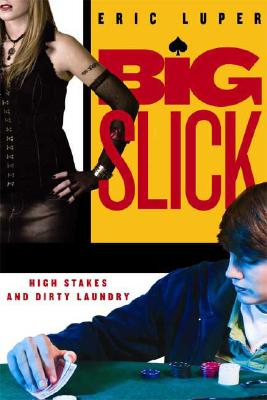 How Authors and Publishers Are Helping Indies Promote Books — Eric Luper
How Authors and Publishers Are Helping Indies Promote Books — Eric Luper
My first novel came out in 2007 and even in that short period of time the landscape has changed when it comes to book promotion. When Big Slick released, the expectation was to show up at a few book signings, sign a bunch of books and go home.
Over the years, and, more importantly, through the release of three more books, I’ve come to learn there is a great deal more to it than this. Sure, there are authors who still show up with nothing more than a pen in hand, but how can these people expect anyone to show up beyond friends and family if there is no outreach?
These past five years have shown me that a little homework, a little groundwork and a little legwork can lead to far more successful events, and this benefits everyone.
I sort of fly by the seat of my pants when it comes to marketing and promotion. So far, every book has been different and I learn things with each book that I can take on to the next. I also discard a whole lot. I like to be experimental when it comes to marketing and promotion.
I try my best to link my efforts to the nature of the book I have coming out. This permeates all aspects of my marketing. So, when I have a humorous book coming out, I try to engage potential readers with humor, I try to make them laugh. When I have a more serious book coming out, I try to raise awareness about whatever the issues I’ve worked into my book. It’s a matter of engaging potential readers with attitude and information that is going to draw them toward the book I’ve written.
Using Jeremy Bender and the Cupcake Cadets as an example, I focused a great deal on humor with Facebook and Twitter. Several times a day, I posted something I found amusing: a quirky thought, an funny article or even a link to something funny someone else said (why reinvent the wheel, right?). Interspersed between those things, I put links to reviews with an engaging quote or some positive thing about my book. I also focused on having a unique and funny book trailer (actually, I left it to my brilliant videographer to make me funny). Both of these have been proving to be really useful.
The interesting thing is that all of these efforts build on one another. So, something positive on Facebook translates well to Twitter or feeding somehow into my website. And great reviews can go anywhere!
Cross-Promotion
Just like authors, local business owners are always looking for ways to get the word out about their product or service inexpensively. That is where cross-promotional marketing can be really useful.
 People consider it thinking ‘out of the box’ but I consider it second nature. Businesses work together all the time to cross promote and having a book out on the shelves is no different. For Big Slick, I had a signing in the main poker room at Foxwood’s Casino. That’s where they have the World Series of Poker! When Bug Boy came out, I did events that related to horseracing. I had an event at the National Museum of Racing. I held events at fundraisers related to racing, at the track and even at an OTB. For Jeremy Bender, I decided to approach cupcake bakeries. Most were more than eager to work on cross-promotional events. For one signing, a bakery is donating trays of cupcakes in exchange for me putting out some signage and coupons for their business. Another bakery is showing up at a different signing with their cupcake bus! The great thing is that cross-promotional marketing can work both ways. Just like I will advertise the event to my own friends, the other company is going to want to do the same. In the case of the cupcake bakery, they have over 2500 Facebook friends and twice as many Twitter followers that would not have otherwise heard of my book. And those people are all local!
People consider it thinking ‘out of the box’ but I consider it second nature. Businesses work together all the time to cross promote and having a book out on the shelves is no different. For Big Slick, I had a signing in the main poker room at Foxwood’s Casino. That’s where they have the World Series of Poker! When Bug Boy came out, I did events that related to horseracing. I had an event at the National Museum of Racing. I held events at fundraisers related to racing, at the track and even at an OTB. For Jeremy Bender, I decided to approach cupcake bakeries. Most were more than eager to work on cross-promotional events. For one signing, a bakery is donating trays of cupcakes in exchange for me putting out some signage and coupons for their business. Another bakery is showing up at a different signing with their cupcake bus! The great thing is that cross-promotional marketing can work both ways. Just like I will advertise the event to my own friends, the other company is going to want to do the same. In the case of the cupcake bakery, they have over 2500 Facebook friends and twice as many Twitter followers that would not have otherwise heard of my book. And those people are all local!
Another thing I like to do is have events at fundraisers or donate money to an appropriate charity. With so much information readily available, press releases announcing new books typically go unanswered, especially when your press release reads like an advertisement. However, I’ve found linking a book release and signing to a charity will garner much better press coverage. It works especially well if the charity is somehow thematically related to your book. Have a book about bullying? Donate a portion of the book sales to an anti-bullying charity. And here’s a little secret: sometimes the bookstore will agree to do this as well. Sure, it cuts into your bottom line, but I’ve found the publicity is worth the cost.
Radio and TV Coverage
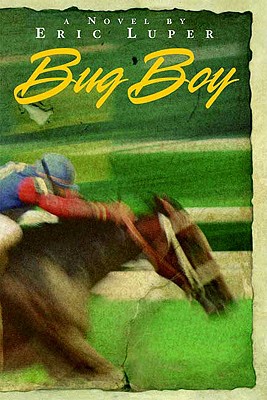 Whenever I set my mind to getting an interview (radio, television or print), I think about what the consumer would want to hear about. I have no illusions about my celebrity. I’m not nearly as famous as most toll booth collectors. People are not going to tune in to hear me talk. I get much better traction with press releases where the book comes second to a sexy topic. I look for current articles and studies relevant to the themes I cover in my books. I quote the article and make that the thrust. As a secondary mention, I segue into the “local author” who has written a book on the topic. This lobs a softball to the news people. It makes it easy for them to envision the story, along with the ‘news angle’.
Whenever I set my mind to getting an interview (radio, television or print), I think about what the consumer would want to hear about. I have no illusions about my celebrity. I’m not nearly as famous as most toll booth collectors. People are not going to tune in to hear me talk. I get much better traction with press releases where the book comes second to a sexy topic. I look for current articles and studies relevant to the themes I cover in my books. I quote the article and make that the thrust. As a secondary mention, I segue into the “local author” who has written a book on the topic. This lobs a softball to the news people. It makes it easy for them to envision the story, along with the ‘news angle’.
I make sure to follow up my contact with a nice email or note thanking them for their time. After a few good interviews, I become a ‘friend of the show’ and they are happy to hear from me when my next book hits the shelves.
Events with Independent Bookstores
Bookstores rock, and I’m not saying that just to suck up to bookstores (although a little sucking up never hurts!). Doing a signing at a bookstore works for the author in so many ways. It’s where the rubber meets the road, so to speak. Of course, at a signing you get to meet fans and grab a few passers-by who might find interest in your book. But bookstore employees tend to be book lovers themselves. And book lovers tend to know other book lovers. It’s also their job to make book recommendations to teachers and librarians and parents and kids. If you and your writing make a good impression on a bookstore owner, your book will be flying off the shelves long after you’re gone.
The manager of my local indie has also been a valuable resource when it comes to ideas. I look at it as a partnership. We both want my book to become popular and sell. She has offered me her opinions on what has worked for other authors and what hasn’t. She has given me ideas on how to reach out to the community and how to turn simple book signings into ‘happenings’. And this has been happening!
Before a Signing
In advance of my signings, there is a lot of work to be done.
The first is my postcards. It’s not often a publisher will send out postcards to an author’s personal contacts. I have been compiling my list for several years and I am continually adding to it. Whenever I go to an event or do a public speaking engagement, I bring my clipboard and place it in front of me. Even if I neglect to mention anything, people inevitably wander up and write down their contact information. If someone is interested enough to write down his or her contact information, that person will be inclined to come to a future book signing. I am in the process of shifting from postcards to an email newsletter, but the concept is the same.
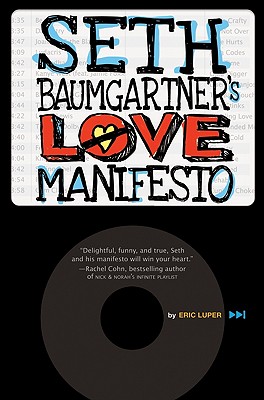 Most authors (just like many bookstores) have Facebook pages and blogs. With only a few keystrokes, an author can reach out to his or her entire ‘friends’ list to notify everyone about where he or she will be appearing. If I had to hazard a guess, I would imagine this is my number one way of attracting fans to a signing.
Most authors (just like many bookstores) have Facebook pages and blogs. With only a few keystrokes, an author can reach out to his or her entire ‘friends’ list to notify everyone about where he or she will be appearing. If I had to hazard a guess, I would imagine this is my number one way of attracting fans to a signing.
I never assume a bookstore has the time to promote my signing the way I would like it to be promoted. Typically, I will design small, eye-catching posters to announce my event and forward them along to the bookstore with a polite note. Of course, I’ll include date and time, but I will also include book jacket, author photo and a few review blurbs. I am considering adding smaller signing announcements that booksellers can tuck into bags along with the receipt. In most cases, the posters are appreciated (and used)!
If I have the luxury of several months notice before my signing, I will sometimes go to the lengths of setting up Skype visits with schools and libraries in the region surrounding the book signing. Typically, the bookstore owner knows the proactive teachers and librarians in the area to reach out to and this has been a reasonably successful effort. A few 20-minute Skype visits with some very engaged groups can lead to a pleasant surprise on signing day.
A few days before the signing, I’ll usually post a note on Facebook and Twitter to remind people about the signing and also offer to personalize any pre-sold copies for fans even if they can’t make it to the event. This way, they can call the bookstore, pay with a credit card, and pick up the book at their leisure.
During a Signing
A book signing does not just have to be a book signing. Try to think out of the box. For Big Slick, I held a teen poker tournament. For Bug Boy, I had a miniature horse outside to raise awareness for the humane treatment of animals. For Jeremy Bender vs. the Cupcake Cadets, there is the cupcake bus! Make the event a true event and even passers-by will wander in. Of course, it’s always about the books but it never hurts to draw them in with something fun and flashy.
Many authors feel that once he is planted in the chair next to the stack of books, his responsibility is done and the biggest worry is whether or not he remembered his favorite signing pen. I always take a few moments to utilize Facebook and Twitter to my advantage, to remind others who might be in the area that they should stop by. Often, people have every intention of coming to a book signing, but the day slips by before they remember to drive over. A simple tweet or a photo posted on Facebook is usually enough to nudge those fence sitters to come on down. No one likes to miss a party!
 In planning a book signing, consider a multi-author event. Most authors feel threatened by another author in the room, but I look at it as an opportunity to gain new fans. Whether it’s a friend or a sibling or a spouse of my author buddy’s fan, my book might appeal to someone else. And in dealing with children’s books, it’s tough to buy one kid a book and deny another! Look for author pairings that have a similar genre but markedly different appeal (i.e. slightly different age group, style, gender of protagonist, etc). I can’t tell you how often I’ll see a little kid come in with his big sister and I’ll send the mother over to the other author’s table to get him a signed picture book.
In planning a book signing, consider a multi-author event. Most authors feel threatened by another author in the room, but I look at it as an opportunity to gain new fans. Whether it’s a friend or a sibling or a spouse of my author buddy’s fan, my book might appeal to someone else. And in dealing with children’s books, it’s tough to buy one kid a book and deny another! Look for author pairings that have a similar genre but markedly different appeal (i.e. slightly different age group, style, gender of protagonist, etc). I can’t tell you how often I’ll see a little kid come in with his big sister and I’ll send the mother over to the other author’s table to get him a signed picture book.
As I said earlier, I never go to an event without my trusty clipboard. If they came to one signing, they’re likely to come to another. It may be the next book, but these things tend to snowball. Sometimes the same people will come to another signing at a different bookstore (of course, once the person read the book, they’ll want copies for every friend and relative, right?).
After a Signing
What ever happened to the ancient art of the thank-you note? I always follow up a book signing with a hand-written thank you note to the bookseller. I make sure to thank not only the owner, but also the staff who made the event so successful. It might not help promote that particular event, but it does help remind those people who work so hard to support us that we appreciate what they do every day.
I also make sure to post a note on Facebook as well to thank the bookstore and all the fans who came out to see me. Nothing encourages them to come to the next event than making them feel like they missed something. Plus, when the inevitable notes come back saying that they meant to get down there but couldn’t find the time, I can tell them that I’ve left a number of signed copies at the store.
************
Nota bene: We reassure you that this blog post was entirely our idea. It was not one of Mr. Luper’s promotional schemes; we cannot be bought! Even with cupcakes. No matter how good they are. But I’ll bet you even money he’ll have Tweeted this link long before I get around to it.
Publishers! Send Us Your (Non-Race-Driven) Multicultural Titles
Elizabeth Bluemle - May 10, 2011
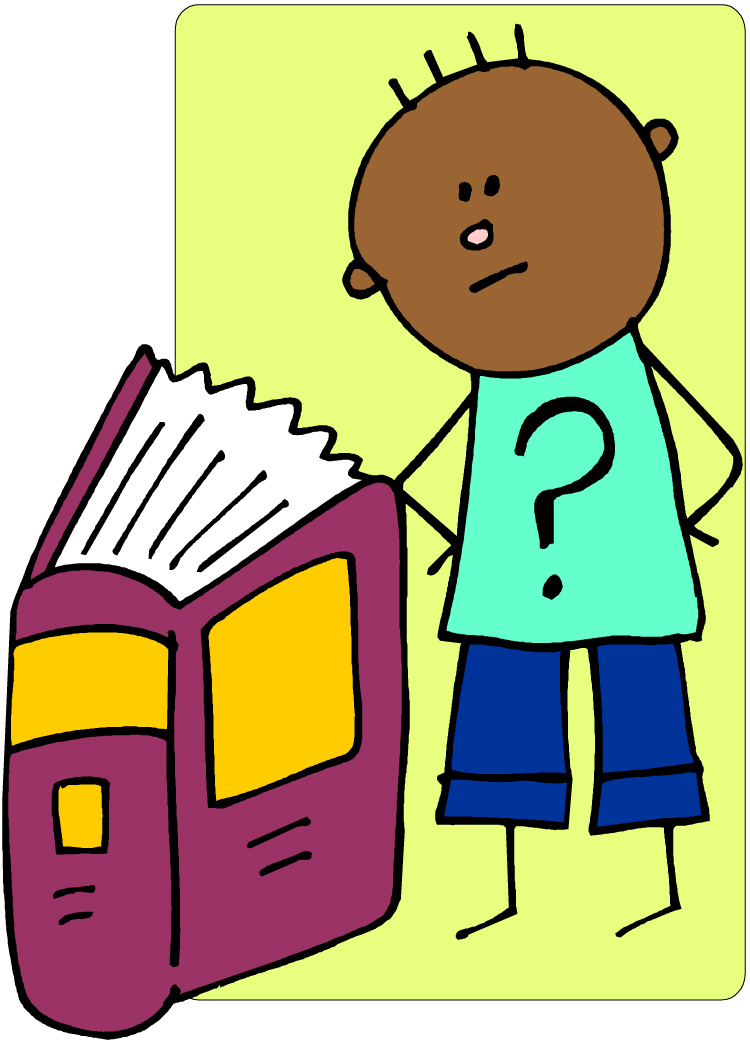 It’s been a while since I’ve brought up the topic of race in children’s books, and I’m eager to hear how you publishers are coming along with your efforts to publish increasingly inclusive lists of books that feature kids of color as main characters in general-interest stories that aren’t primarily driven by issues of race.
It’s been a while since I’ve brought up the topic of race in children’s books, and I’m eager to hear how you publishers are coming along with your efforts to publish increasingly inclusive lists of books that feature kids of color as main characters in general-interest stories that aren’t primarily driven by issues of race.
Stories and nonfiction about racially charged eras and issues of racial identity in our culture are critical, of course. But equally important are mainstream stories—in every genre—that feature kids of color as main characters in a setting that, like most of America, is culturally and racially diverse. Stories about friendship, family, pets, love, character, self-reliance, etcetera, in mysteries, adventures, science fiction and fantasy, for every age child and every type of book, including chapter books, board books, easy readers. We need all of these books, now. Need them deeply and importantly, as my mother would have said.
The good news is that we are seeing more new titles fitting this description in catalogs and rep meetings, and arriving at the Flying Pig in new-release cartons.
For more than a year now, I’ve maintained a multicultural online bibliography on LibraryThing.com, of as many titles fitting the above description (books that feature kids of color as main characters in general-interest stories that aren’t primarily driven by issues of race; kids of color must be depicted on the front cover of the books if there are any characters depicted in the art). These books are sortable by age range, genre, and format, and there are more than 600 titles in the collection so far.
I would LOVE for publishers to send me lists of any 2011 titles that meet the criteria. Kids of color must be featured on the book covers. You can use my email: ebluemle AT publishersweekly.com or mention titles here (just bibliographic info in the comments here; no promo, please). I’ll add them to the list and celebrate you to the skies!
P.S. A heads-up. Soon, I’ll be inviting you to share success stories about increasing diversity within publishing houses. I really, really hope to hear some great news.
Let’s Start a New Holiday
Josie Leavitt - May 9, 2011
The week of Mother’s Day is always a fun one at the bookstore. There is an increasing panic as Sunday draws near. In the beginning of the week, husbands and fathers come in the store feeling a little self-righteous because they’ve actually planned ahead of time to get their wife a thoughtful gift and their Mom a card in the mail in time to arrive by Mother’s Day.
Then there are the men who come dashing in on Friday and Saturday. They buy whatever card we have left, ask what a “good book for a woman” might be and are thrilled when we offer to wrap. These men are not bad men, they are just busy men who might not always have Mother’s Day on their radar. The kids are usually very helpful in book selection. I must have overheard three conversations where a little kid, usually a girl, spent a long time trying to convince her dad why a princess or fairy book might be just want Mommy would want. “Daddy, she likes to dress up!”
I think most bookstore employees this week worked hard at helping men get the perfect book. Part of our jobs is to make the gift giver look great. We don’t just recommend what’s hot, we ask questions: what does your wife like? does she have any hobbies? any favorite authors? do you two do things together? etc. A thoughtful gift can only work if thought goes into every aspect of the purchase.
I like to envision every Mother’s Day beginning with breakfast in bed. Not a gourmet breakfast, mind you, but the kind a lot of kids make: scrambled eggs with bits of shell, slightly burnt toast and nothing actually hot, except maybe the coffee. Then the gifts come out. Homemade cards, which are adorable from the kids, maybe a gift certificate for a pedicure and a heartfelt card from the husband and then a book that she wants to spend all day reading. And if most families are really thinking about their hard-working moms, they will have let her had the day to just read. Imagine, a whole day to just read guilt-free.
I think we should have Reader’s Day, so all the folks who aren’t mothers or fathers can still have a guilt-free day of reading, just because it’s their day.
A Meeting with David R. Godine
Josie Leavitt - May 6, 2011
I think it’s safe to say that David R. Godine is not like other publishers for a variety of reasons. His books are small print-run gems. The paper, the craftsmanship, the quality and the eclectic catalog, all make for a lovely buying session. What makes it even better for me is that David calls on us himself.
David loves books and that shines through from the moment you start talking about books with him. He is passionate about all his titles, but also honest. Often he’ll say, as I’m lingering over catalog copy, “You don’t need that. Turn the page, this you need. You need three of them.” If I look hesitant, he looks imploring and then he takes out the F&G and goes through it page by page and tells me, not only about the book, the author and the art, bu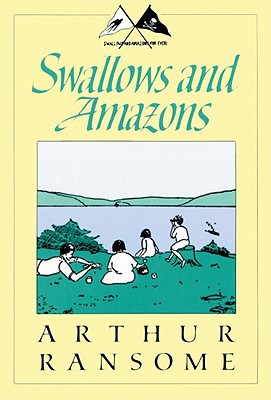 t about the paper and how good it feels. I spend a lot of my meetings with David rubbing paper between my thumb and forefinger exclaiming, “That paper does feel great.” He also convinced me that I desperately needed to restock Ferdinand the Bull in Latin. I resisted, but it was for naught. David’s argument was compelling, “You just need it.” So, now I have one lovely copy of Ferdinandus Taurus. And I’m sure someone will buy it by the end of the month.
t about the paper and how good it feels. I spend a lot of my meetings with David rubbing paper between my thumb and forefinger exclaiming, “That paper does feel great.” He also convinced me that I desperately needed to restock Ferdinand the Bull in Latin. I resisted, but it was for naught. David’s argument was compelling, “You just need it.” So, now I have one lovely copy of Ferdinandus Taurus. And I’m sure someone will buy it by the end of the month.
I suspect that times are tough for a small publisher of high-quality books. I am always happy to buy Godine books. When we first opened, people judged us as a good or a bad bookstore by how many in the Swallows and Amazons series by Arthur Ransome we carried; we carried them all from day one, we try never to be out. One of my all-time favorite books for summer, The Worry Week by Anne 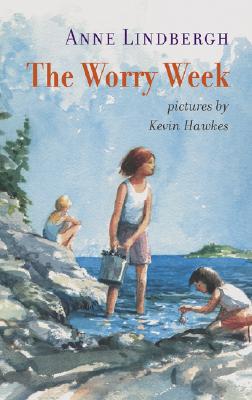 Morrow Lindbergh, just sets the perfect tone for a summer reading adventure with sisters. Full of humor and real family situations, it’s a lovely book that most customers don’t know about.
Morrow Lindbergh, just sets the perfect tone for a summer reading adventure with sisters. Full of humor and real family situations, it’s a lovely book that most customers don’t know about.
David does one thing that’s so smart: he brings a few seasonal backlist titles to the meeting to refresh your memory. This worked really well for me, as I tend to forget titles. So now, I’m fully stocked in new Godine titles and have a good stash of summer titles that I know I’ll need as the weather gets better.
My favorite part of the meeting was the “Let’s bargain for this book” segment. David pointed to a backlist catalog page and asked how much would I pay for a particular book I had been eyeing. I looked at the list price of $24.95 and rounded it to 50% off, and suggested $12. “Lower!” he implored. I said, “Nine.” I just didn’t want to suggest an insultingly low number. “Lower,” he said again, with a gleam in his eye. I looked at him and said, “Seven fifty.” I felt brave. He slapped his hand on the table and pretty much called me a sucker. “Five dollars.” I looked incredulously at him. He told me the book was newly remaindered and he could afford to sell it for so little. What fun.
I took two and treated him to coffee, but the barista would take none of my “I’ll pay you $3.75 for both.” He just looked at me like I was crazy. I snickered to myself and forked over eight bucks.
The Stars So Far: Yes or No?
Elizabeth Bluemle - May 5, 2011
Last year and the year before, people seemed to appreciate the ShelfTalker posts where I gathered starred reviews from Booklist, The Bulletin of the Center for Children’s Books, the Horn Book, Kirkus, Publishers Weekly, School Library Journal, and VOYA (Voice of Youth Advocates). Recently, I’ve received emails asking for the 2011 Stars So Far list, and thought I would share my dilemma about the list and its purpose, and open it up to you.
I had all but decided not to repeat the project this year, in part because it is incredibly time-consuming to collect, reformat for consistency, double-check, and count all of the starred review titles. (I do have another full-time job.) But then I started receiving requests for it, and thought more deeply about my conflicted feelings about The Stars So Far. I realized that, beyond the time commitment, I have other hesitations, not least of which is the suspicion that, in providing a sort of one-stop-shopping list, I am complicit in an activity that actually contributes to the narrowing of readership to fewer and fewer titles.
As I said in one of last year’s posts, “Starred reviews are excellent guideposts, but they don’t tell the whole story. There are amazing books out there that never receive a starred review but are popular and/or critical favorites nonetheless.”
When starred reviews become a primary source for book orders, a lot of worthy books can get left in the dust. Often, these are solid “midlist” titles, the kind that make wonderful meals for kids but may not have that extra hook or flash or literary pedigree to grab the eye of a reviewer. I’ve also wondered if starred reviews influence other review publications’ stars, and even have the potential to sway award committees.
Last year, the final tally of starred reviews reached something around 500 titles. For librarians and teachers, this is already far beyond an affordable number of books to add to a collection. As a book buyer myself, I can see the temptation of using a convenient starred review list to corroborate purchasing decisions. Of course, such a list is no substitute for seeing a whole publishing season’s offerings, knowing your local customer base, hearing rep opinions, and being open to serendipity. I know that buyers aren’t using the Stars So Far list as a replacement for these other methods, but I wonder how much of an effect starred reviews do have on buying decisions. We sometimes forget that a star is awarded by a single person—the reviewer (although, in most cases, the editor of the review publication also must confirm the star). Reviewers and editors take great care assigning stars, but each starred review still comes down to taste. Because of this subjectivity, I think starred reviews might carry more perceived weight than they actually merit.
It’s hard enough for writers — especially debut and less established authors — to get their books noticed. There is something wrong with the system when even a successful, longtime author feels like a failure because he or she has never received a starred review. (I can’t tell you how many times I’ve heard authors confess they feel this way.) I don’t think the sense of failure comes so much from typical writerly neurosis, than the recognition of a hard truth: that with all the noise around us, all the information coming at us from all directions, the thousands of books published each year, it gets harder and harder for a book to be seen and heard without a massive promotional effort or critical attention. To a certain extent, the starred review list seems to play into this problem.
I’m listening for your thoughts pro and con, as I try to decide whether or not to resurrect The Stars So Far. What say you?
A Tough Day for Titles
Josie Leavitt - May 3, 2011
Sunday was a lovely day. The sun was out, it was warm, and customers were very happy to be in the store. There were a lot of browsers who were content to amble about the shelves. Then there were the customers who knew what they wanted, but had no idea what it actually was.
The first book seeker was a woman, new to the store, who was looking for a book that began with T. I asked for more details. She had the good grace to chortle at the absurdity for this very vague request. She added, “It’s a new show on HBO.” So I zip the HBO website and she didn’t recognize any of the show titles. Then suddenly she said,”It’s got throne in the title.” Okay, now we’re talking. I went immediately to show her the new Rick Riordan cover on books in print. She just wasn’t sure. I asked if she had a lifeline she could call. Well, two minutes later she comes back with a title: Game of Thrones. Well, alright! We had that book, and she ordered all the rest in the series. She left with our newsletter and a big smile on her face.
The second query was not so easy and it came from an earnest boy of about nine: “Do you have books with wizards’ spells?” I looked at my wizard shelf and we had surprisingly little in stock. I showed him Wizardology, no that wasn’t right. “It a book called Wizard. Why can’t you find it?” I told him there were over 5,000 books with wizard in the title. He said with the sincerity only a child can have, “Can I look at the covers?” Um, not so much. He then explained, in excruciating detail, every aspect of the cover. I failed him, utterly. The fact that there was a wizard with a green robe on the cover did not ring any bells loud enough for me to help him find the book. His dad mentioned that his friend owned the book and I suggested calling, but for reason, this young man didn’t feel like it. So, he left disappointed and I was perplexed.
In between helping him find his spell book and answering the phone, a woman, I believe the wizard’s mother, asked for help. I was happy for what I hoped was an easy distraction. She said she was looking for a new-ish book about a dead mother. It was all could do not to scream right on the sales floor. I asked if she could tell me more about it. “No.” Why is it customers often just assume that their book request will just leap to our mind automatically? There are so many books with dead mothers, I didn’t even know where to begin. I asked my usual leading questions, where did you hear about the book? She didn’t remember. Could she think of anything in the title? No. Author? No. Why is it customers looking for books they can’t remember so often treat you like you can’t speak English? and they just repeat their query again, but louder?
There was nothing I could do, but pretend to type like I knew what I was looking for, when in actuality I was checking my email. I know when a battle is lost, and I told her to call me when she got more info; I’d love to order the book for her. I’m still waiting for the phone to ring.
Tom Angleberger, Or, The Skype Visit That Was(n’t); Or, Placating the Hordes
Elizabeth Bluemle - May 2, 2011
What do you have when an author visit gets thwarted by 1) a second-story fall, 2) surgery to fix the resulting badly broken leg, precluding travel, and 3) unreliable wireless service? You have our Sunday event with intrepid author Tom Angleberger, creative genius behind The Strange Case of Origami Yoda and his new Horton Halfpott: Or, the Fiendish Mystery of Smugwick Manor; Or, the Loosening of M’Lady Luggertuck’s Corset.
When we heard the distressing news about Tom’s accident, we considered simply rescheduling the event for this fall, but then Abrams publicist Laura Mihalick suggested a Skype visit instead, and we thought it was an interesting idea. We’ve never done a Skype visit with an author; how 20th-century of us! It was high time. Laura and Tom also arranged to have bookplates (complete with cute drawings) sent ahead of time.
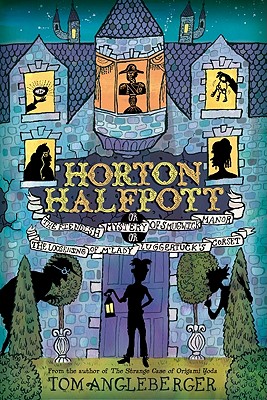 So what do indie booksellers do in a situation like this? First, to alert our customers to the change, we sent out an email blast to our mailing list and made a new printed events flyer. However, somehow, we either neglected to alter our website listing or the change didn’t “take” (our web tool has changed platforms and I am not quite up to speed on the new system, so I like to think I did at least TRY to change it…). At any rate, it didn’t appear, which we found out when one of the event attendees mentioned it afterward. Whoops. We did figure that most of the kids who showed up would not have gotten the message that Tom wouldn’t be there, and hoped the Skyping and bookplates and new novel would assuage their author hunger enough to last them until he is able to visit in person.
So what do indie booksellers do in a situation like this? First, to alert our customers to the change, we sent out an email blast to our mailing list and made a new printed events flyer. However, somehow, we either neglected to alter our website listing or the change didn’t “take” (our web tool has changed platforms and I am not quite up to speed on the new system, so I like to think I did at least TRY to change it…). At any rate, it didn’t appear, which we found out when one of the event attendees mentioned it afterward. Whoops. We did figure that most of the kids who showed up would not have gotten the message that Tom wouldn’t be there, and hoped the Skyping and bookplates and new novel would assuage their author hunger enough to last them until he is able to visit in person.Then, we did a test run the day before the event. Worked like a charm! Clear visuals, good sound. All was well. At least, we thought so — until Saturday morning, when we gathered all of the guests—who absorbed the news of Tom’s absence with gracious aplomb—only to encounter Skype malfunctions of the worst kind. Dropped calls, missing video, 11-year-olds enthusiastically offering misguided technical advice (“Press THIS button!” “No, that one!” Click. Dial tone. Lost call. Lather, rinse, repeat.) This went on for a Keystone Kops-esque 20 minutes or so, moments of hope followed by minutes of despair. While Josie valiantly fiddled with the laptop, I affixed bookplates in the kids’ copies of Origami Yoda and Horton Halfpott and helped them tape their little origami Yodas.
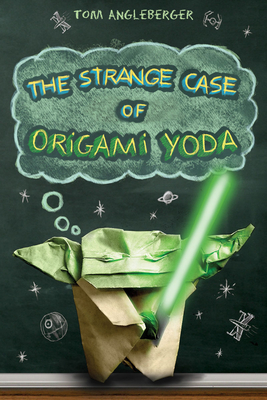 We felt terrible not being able to get the video functioning. The kids were SO terrific! They weren’t mad, but they were a little disappointed, naturally. Really, they could have complained and whined, but instead took the delays and disappointment in stride, trusting that Tom would visit in the future and they would get to meet him someday.
We felt terrible not being able to get the video functioning. The kids were SO terrific! They weren’t mad, but they were a little disappointed, naturally. Really, they could have complained and whined, but instead took the delays and disappointment in stride, trusting that Tom would visit in the future and they would get to meet him someday.We offered the families 20% off downstairs in the store, which they appreciated. We also invited them to sign up on the email list if they hadn’t already, to make sure they always have the most up-t0-date event info. So families started trickling down to browse for books or get on with their Saturday.
And then patient Tom came out with a most generous offer (sent via email, since Skype had flaked altogether by then): he asked for the kids’ names so he could send them personalized drawings of Darth Paper! I ran downstairs to collect as many names as I could. You should have heard the excited gasps and seen the won-the-lottery grins on the faces of the kids who received that news. We missed some families who had already left, but lots of participants will be receiving small personal treasures from a quick-thinking, talented, generous author and artist — and really, along with the books, what more could a kid really want?
All’s well that ends well. I’m pretty sure we didn’t lose any customers, and we actually had two families new to the store thank us for our handling of the event and tell us they’d be back. It’s pretty gratifying when you can NOT present a promised author to an expectant group and somehow turn it around. As event disasters go, this one was made tolerable by all parties—guests, booksellers, and most especially a wonderful author—making the very best of an unfortunate situation.
Anyone else got disaster stories to share? And tips for salvaging them?
Lambing Season at the Flying Pig
Josie Leavitt - April 29, 2011
Every once in a while I am reminded that my store is in a rural area. Yes, we’ve got turkeys and deer in the back yard, but I forget that customers are often farmers, and sometimes they’re new at it.
I got a call on Monday from a somewhat frantic woman who was desperately searching for Storey’s Guide to Raising 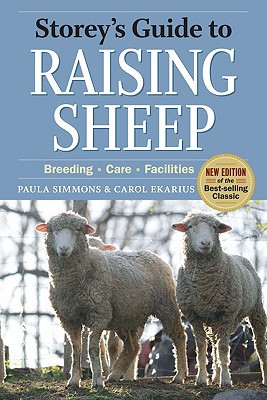 Sheep. It seems her first-time mamma ewe had rejected her twins lambs and my customer had her hands full. At first I couldn’t find the book. I took her number and vowed to call her back. I located the book, proving once again the Flying Pig adage: If you wait long enough, we’ll always find the book.
Sheep. It seems her first-time mamma ewe had rejected her twins lambs and my customer had her hands full. At first I couldn’t find the book. I took her number and vowed to call her back. I located the book, proving once again the Flying Pig adage: If you wait long enough, we’ll always find the book.
When I called Paula back she was so relieved. Apparently, she had called every bookstore, new and used, in a 100-mile radius of the store and no one had the book. She practically hugged the book. I guess raising two tiny lambs is daunting work.
I called my vet’s office to see if he could help. It seems he and the shepherds had been friends before he moved and he said he would call them. When Paula came to pick her book she looked absolutely exhausted. One lamb just wouldn’t take a bottle. She was worried for him. I made a suggestion of soaking a towel in milk replacer to see if he would take nourishment that way.
I have happy news to report. After a phone consultation with the vet who then dropped off medicine for the young lambs, Buddy and Leggy (Timothy, the lamb’s owner said, “he’s really just all legs”) are thriving young lambs who are running around the barn.
As I was hanging up with Timothy he thanked me for my help and said that only an independent bookstore would go to such lengths, and he lamented that his favorite had closed four years ago, “And there was nothing like it.” I understood what he was saying and took no offense. Every indie lost is felt by many in a lot of different ways.
While, I’m no James Herriott, I like to think I had a small hand in helping young Leggy live. Next week, I’m getting pictures of Buddy and Leggy; I can’t wait.
Author Event Tips
Josie Leavitt - April 28, 2011
I blogged about how to have an author event over a year ago. I wanted to do it again because I feel like some things have so fundamentally changed, that I needed to update things.
– Work with your rep. I cannot stress this enough. Reps are your friend, whether you have a phone rep or are lucky enough to see one in person. If your rep says, “Fill out the author tour grid,” fill out the grid. Some publishers use the grid as a starting place, so don’t shoot yourself in the foot by not doing it.
– When you book an author, make sure you get a confirmation letter from the author’s publicist. Double check the date and time early on in the event process, while you can change things, because if you notice three weeks later that something’s amiss, it may be too late to change things.
– The moment that event is confirmed you need to do several things right away. The first thing to do is place your order, both for the book that the author is touring for and for the author’s backlist (even if the backlist is from a different publisher). The second thing to do is ask the publicist to email you a high resolution book cover, author photo and any press material they might have. This makes life so much easier when it’s time to create your promotional material.
– Once you’ve placed your order, immediately contact your rep and find out how much co-op money you have, and ask what the publisher’s event co-op is. Often publishers will give you 5% of your supporting order to help you out with promotion, wine and cheese or cookie platters, or anything you can dream up. You must get permission before you do anything. Without permission beforehand, you risk losing the money that’s rightfully yours. The beauty of event co-op is your book order then counts for the following year’s co-op pool. In a sense, it’s sanctioned double-dipping.
– Okay, so now you’ve confirmed the event, ordered the books, secured your co-op, now the promotion begins. The moment the event’s confirmed it should go on your website, even if the event is months away. Your website should be a place where customers, new and old, can go see how vibrant your store’s events are. Once the events are your website, make your life easy and cut and paste the descriptions to all the calendar listings in your area. Calendar listings are an easy, and free, way to get the word about your events.
– Press releases still need to get done, even though some larger city papers don’t use them. Smaller cities with local papers who are often looking ready to use content. Be sure to attach photos in the email. Do not embed them in the press release because then they can’t be used separately, and often papers use the photos in different ways. Send them at least six weeks ahead, especially for papers that come out monthly.
– At least three weeks before the event, set up your event table with the books and a sign that says when the event is. Set up some books at the register and make sure your staff knows the details of the event and can talk about the author’s work with animation and knowledge.
– Now to the social media components. If your store doesn’t have a Twitter and Facebook account, get them. Twitter is a quick, and short way, to let your followers know what’s happening at your store. Once you book an event, it’s a good idea to send a quick tweet about it. Same thing with Facebook. It’s your job as a bookseller to build momentum for every event your store hosts. You should also set up a Facebook invitation for all your events. You can send this to all the people who have clicked the “like” button on your page. If used well, Facebook and Twitter can really drive people to your events. Also, the power of Twitter and Facebook is enormous, as publicists often follow bookstores. If they like what they see in terms of promotions and how books are discussed, it can help make your store stand out from others, and this can help you get more authors.
– Don’t forget the power of e-mail. If your store collects e-mail addresses, put that info to good use by sending these interested customer news about your store’s events. E-mail blasts are a great way to reach everyone on your list, and this can be thousands of people. The beauty of this is you know that people who are interested in your store are reading information about your store. It’s a much more targeted way to reach customers than a print ad, and it’s a lot less expensive. And, if you’re savvy with your co-op, the monthly fee for your e-mail company is free. Don’t inundate your customers with e-mail. Be selective, be thoughtful and make sure your e-mails are professional looking, engaging and have links that lead back to your website for more information or for book purchasing.
– Events are fun. Yes, they are a lot of work, but when I look at my bestsellers for the year, the lion’s share of them are event books. Remember, the sales possibilities for events do not end with the event. Set up an autographed section in the store and the books will sell long after the author has gone back home. And community goodwill goes a long way when there’s a great event that’s well run.
– Lastly, like your mother always said, send a thank-you note with an event recap to the publicist.

